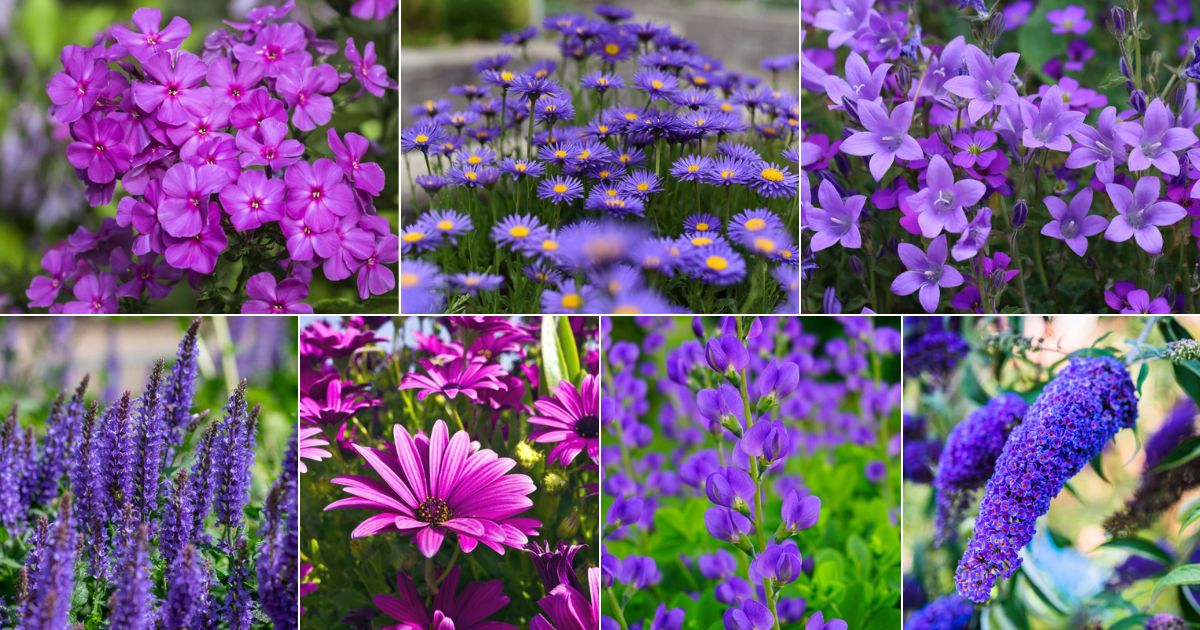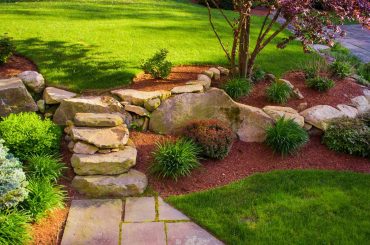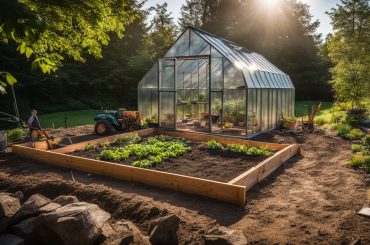Table of Contents
The style of your garden depends on the colours you choose. Purple is a hue that is frequently connected to luxury and aristocracy. Purple flowers may give a splash of colour to your yard because they contrast nicely with other shades.
Bright pinkish-purple flowers can provide drama, while light purple flowers can generate thoughts of tranquillity and harmony. While deciding which plants will perform best in your yard and where to place them, keep shadows in mind. Flowers come in various colours, sizes, and scents, particularly our favourite purple perennials.
Anticipating sprucing up your nursery in the upcoming season? We would agree that that is smart; hence, a punch of purple blossoms could be something you want. Otherwise called the shade of eminence, purple perennials light up your space and give your nursery a few wonderful tints to make a plunge. Many shades of purple blossoms can perk up your nursery effectively and make it look more lovely. Here are various kinds of purple blooms that you can present to your greenhouse in the forthcoming season. See and pick your pick to find the ones ideally suited for your nursery.
Stunning Purple Perennials for Your Garden
Here are 28 purple perennials that produce stunning flowers in shades ranging from blackish violet to rich purple and from lilac to mild lilac!
1. Allium
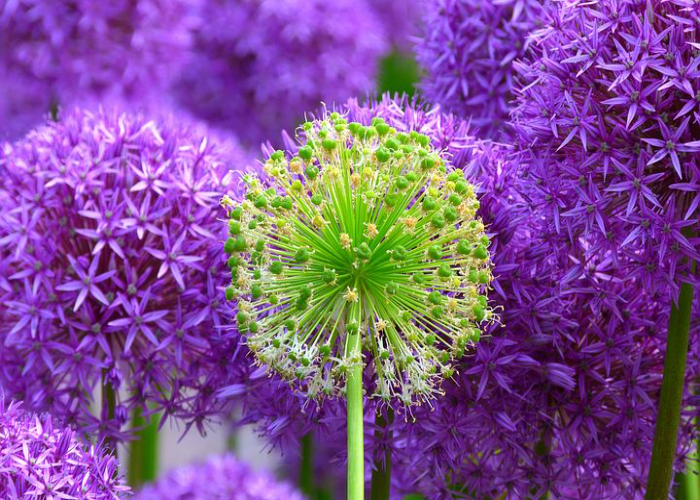
From the onion family, allium plants have a floral head with floret clusters. The flowers of alliums can be spherical, oval, or cascading in shape. Purple is one of the many vividly coloured blossoms found on flowers. If you plant alliums in well-drained soil in a sunny location, they require little maintenance. You won’t need to fertilize, weed, or water it frequently. Allium’s watering requirements are often met by rainfall, but if there is a drought, you might need to water your plants. Moreover, organic mulch might improve the well-being of your allium plants.
2. Bearded Iris
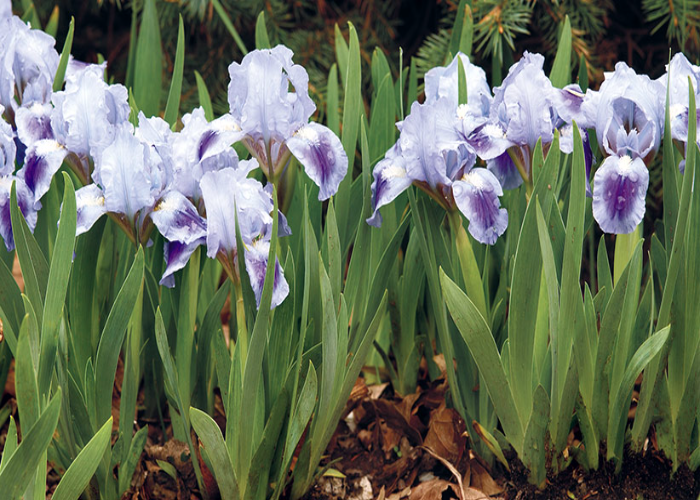
Although it may tolerate little shade, this gorgeous flower grows best in direct sunlight. Humus soil is the best soil type to grow bearded iris. This purple perennialshould be kept moist but not overwater. Bearded iris plants may withstand brief droughts. The bright hues of the Bearded Iris, including royal purple, are accented by the exquisite design on each petal. This flower’s popular name comes from the fuzzily projecting “beards” that grow above the cascades. Due to the abundance of hybrids, many variants are not morphologically resemble Iris germanica. These purple perennials are resistant to deer but draw hummingbirds.
3. African Daisy
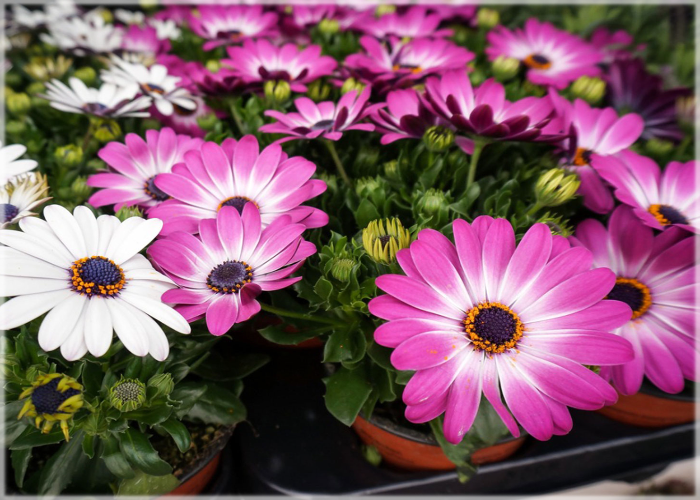
African daisies are perennial evergreen plants with deep purple flowers. These magnificent purple blossoms may have a tinge of pink, white, or peach faded into the petals depending on the flower and the time of year. After they have established themselves, you may enjoy the brilliant hues of these perennials from spring through autumn. You can anticipate their blooming in the middle of the summer. While watering African Daisies, be careful not to overwater them because the root might rot.
4. Butterfly Bush
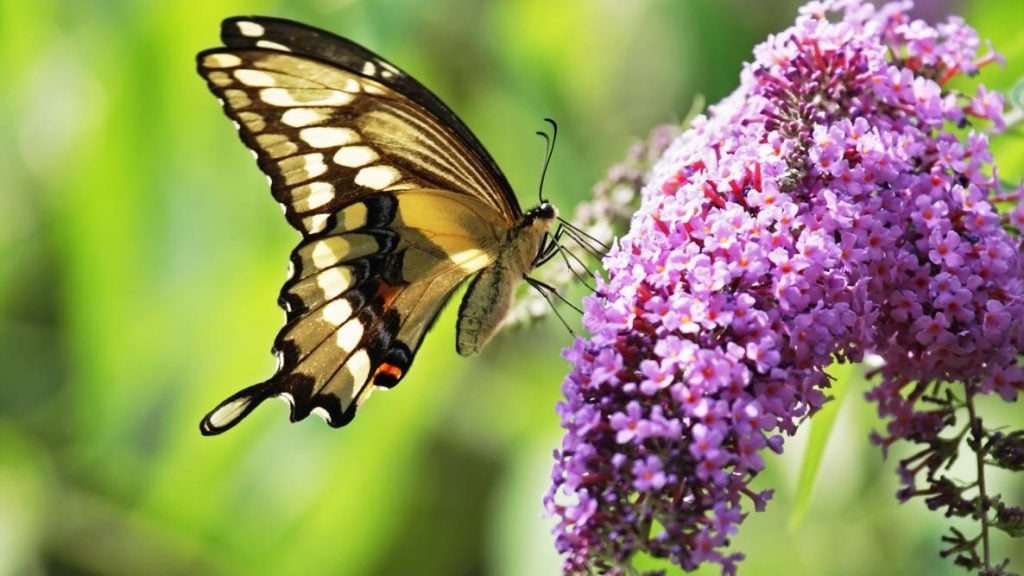
The perennial butterfly bush is easy to grow and has gorgeous flower spikes. These flowers are available in a range of hues, including multicolour. Due to their beauty and ability to survive in challenging environments, these perennials are beautiful additions to almost any garden. Planting butterfly bushes in full sun promotes the best blooming. Despite being able to endure some shade, they might not blossom as well. This plant is OK with its soil preferences as long as it is well-drained. It’s preferable if it rains or if you often water the plant every week. Be careful and study local areas because this plant may be considered invasive in some places.
5. Anise Hyssop
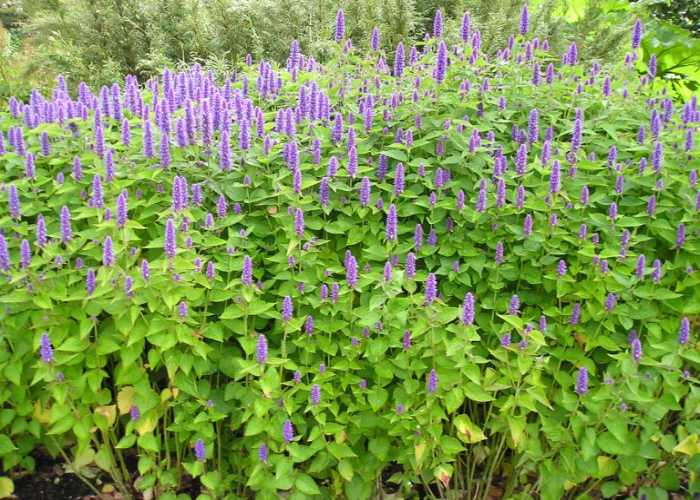
Anise Hyssop is a herbaceous perennial with fragrant bluish-purple blossoms, also known as giant blue gossip or fragrant giant hyssop. Anise is a liquorice-flavoured culinary plant that can also be taken as a herbal supplement. Anise flowers are resistant to animals, have pleasant nectar, and draw pollinating insects like bees. Hummingbirds are also known to be drawn to them. First Nations inhabitants of North America have used anise hyssop as a tea, a breath refresher, and a sweetener. The herb’s infusion was used to treat chest aches, while the roots were applied topically to treat coughs. Chinese medicine uses Agastache to treat angina, heatstroke, headaches, and fever.
6. Bluebonnets
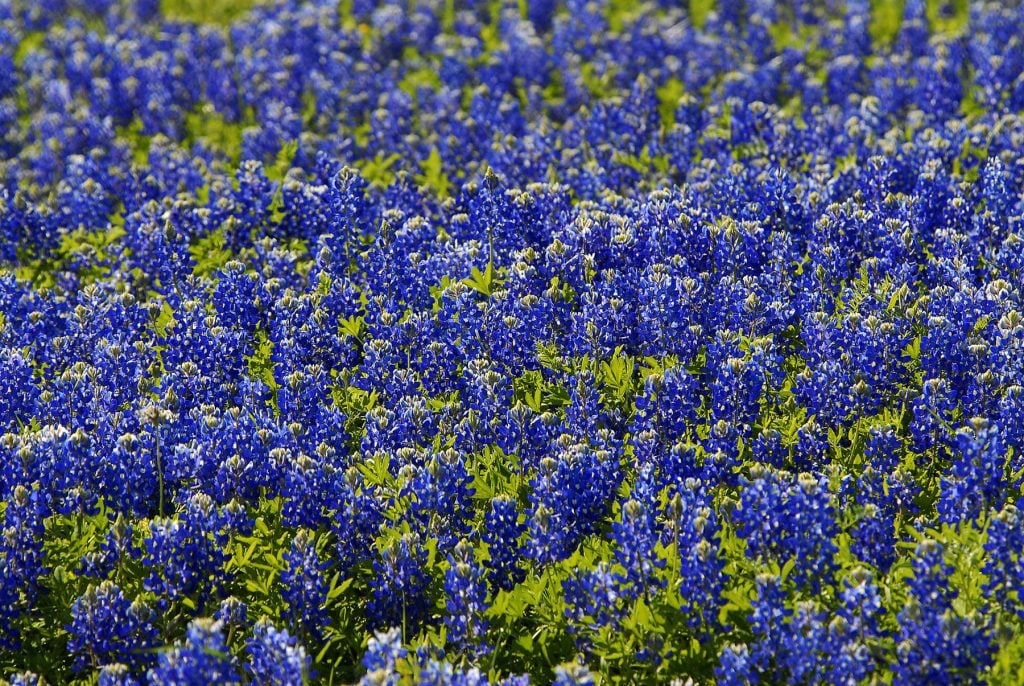
Bluebonnets are lupine hybrids that are well-liked by gardeners for various reasons. These plants have light green foliage and clusters of vivid blueish-purple blooms. Different vibrant hues and the rapid growth of these flowers are two of their key advantages. Bravery and self-sacrifice are the spiritual meanings of the bluebonnet flower. Due to their striking beauty, bluebonnet flowers are frequently used to decorate homes in the United States. Even putting bluebonnet flowers in front of the house brings good fortune.
7. Catmint

Catmint is a purple perennial herb from the mint family. Catmint is simple to plant and has good pest and deer resistance. Catmint can be grown all year round. The blossoms and leaves can be used to brew tea, which has health advantages, including easing coughing, congestion, and menstrual cramps. Catmint has a pleasant, minty taste, as one might expect. Although catmint does well in a soft shade, full sun is preferred. They thrive in humus-rich, well-drained soil, while certain species may grow in various soils. Catmints can tolerate dry times once established but need water to start.
8. Coneflowers
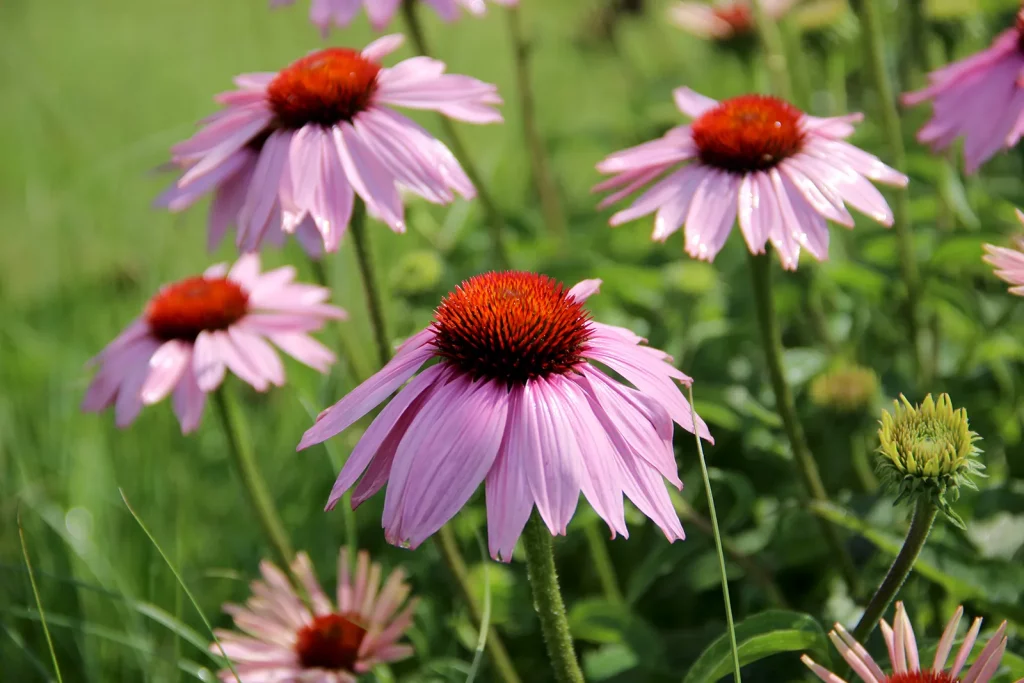
Coneflowers are tough plants that practically every gardener includes in their arrangement. Each bloom has several small, vibrantly coloured flowers. Bees, butterflies, and hummingbirds adore coneflowers, and some birds enjoy eating their seeds. These purple perennials produce a profusion of colour in their early spring blooms. Coneflowers can endure various temperatures and can thrive in multiple soil types. Coneflowers can withstand drought, but until established, regular watering is ideal. Echinaceas, in adulthood, only become thirsty during droughts.
9. Dalmatian Bellflower
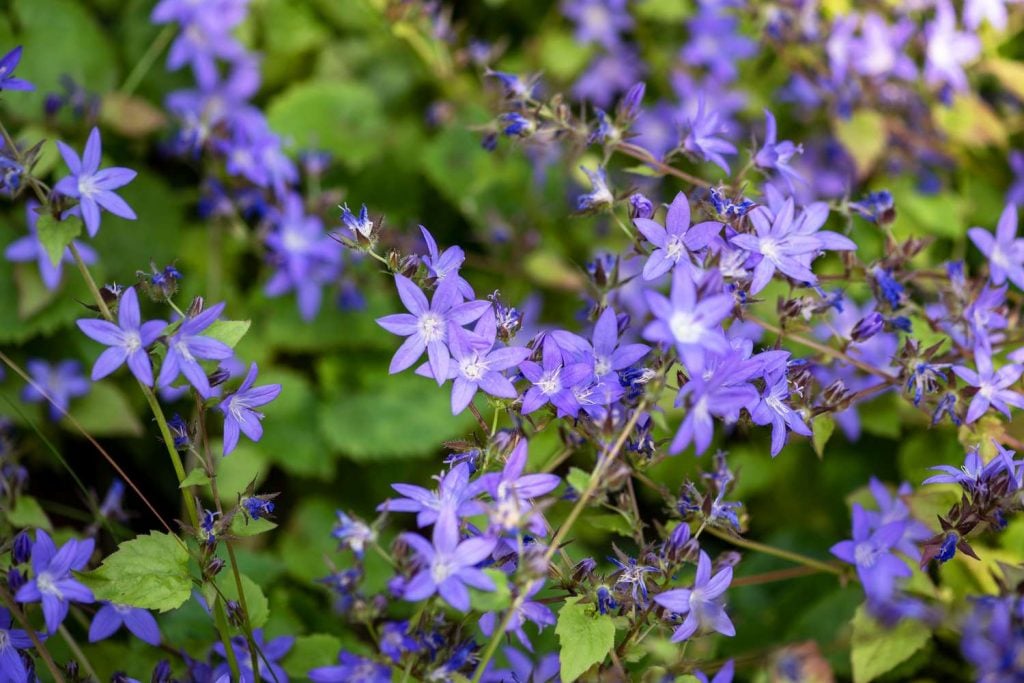
The Dalmatian Mountains are where this species gets its name in Croatia, where it is native. Low-growing perennials called Dalmation Bellflowers are used by gardeners as edging, to fill in empty spots, and to create areas where the foliage can hang over retaining walls. Depending on the local heat index, perennials prefer either partial shade or full sun. When given weekly watering and lots of sunlight, its blossoms are known to spread swiftly. Although Dalmation Bellflowers prefer well-drained, moist soil, avoid overwatering at all costs.
10. Fake Aster
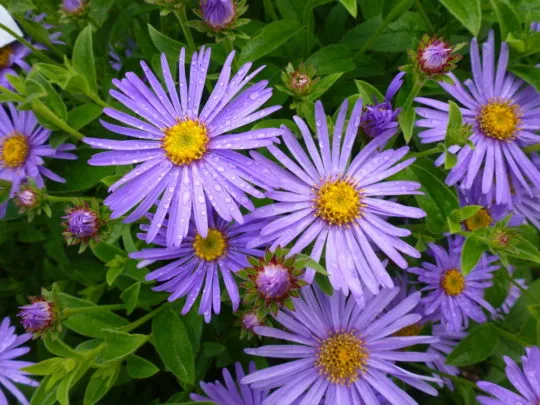
While they are separate species, Fake Aster flowers are similar to Aster flowers. The purple petals have vivid yellow centres. It has slender stems and greyish-green leaves. You may expect a lot of blossoms from late summer to early autumn. Plant Fake Aster in moist soil areas that receive full sun or shade. Boltonia thrives in humid and sunny environments. As long as the soil has enough moisture, it grows well in most soil types.
11. Daylily
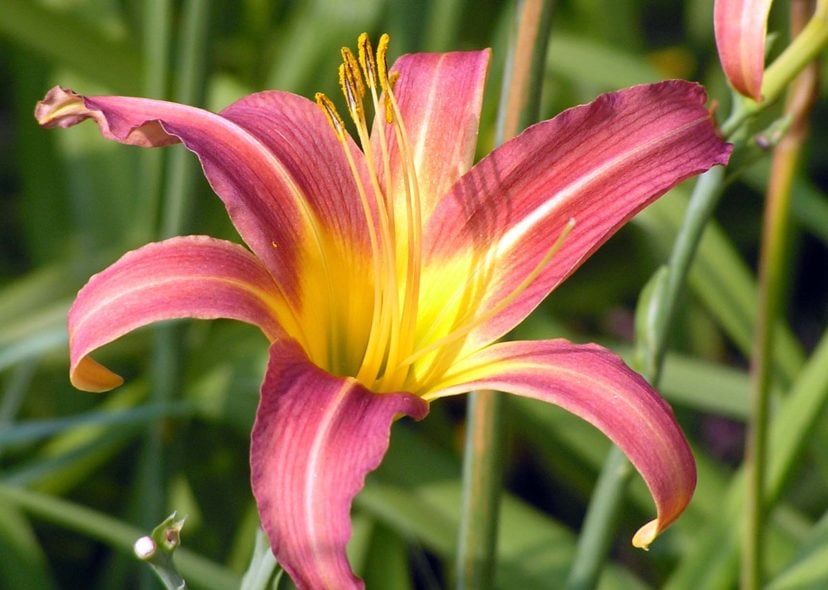
Despite their name, daylily blooms are not lilies, though they resemble them somehow. Some flowers have gorgeous petals that are multicoloured. These purple perennial plants expand rapidly, can survive in various soil types and solar exposures, and are drought- and flood-tolerant. A minimum of six hours of direct sunlight each day is preferred by daylilies. It can be helpful to have some afternoon shade in hotter climates. Although these perennials can grow in various soil types, fertile loamy soil is ideal. Up until they become established, they require regular watering. They only need water when there is a prolonged drought.
12. Fake Indigo
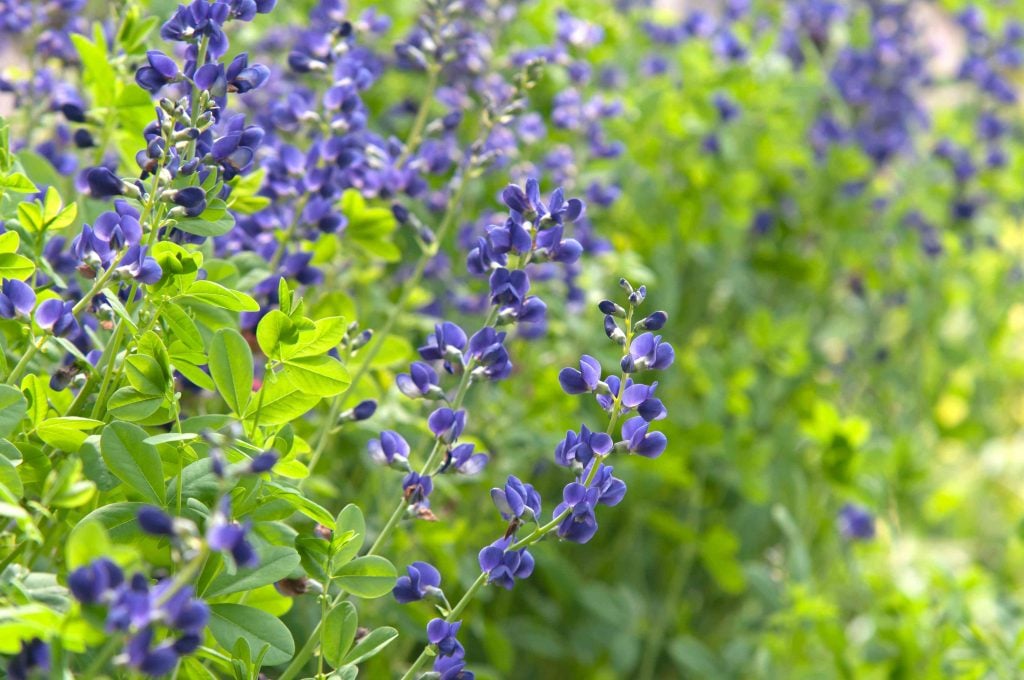
The bushy perennial False Indigo, sometimes known as Wild Indigo, has tall, erect indigo blooms. This plant is a striking addition to any garden, despite the delicate nature of its blossoms. When Fake Indigo is small, plant it in reasonably well-drained soil; dry soil types are acceptable once it has grown. One inch of water supplied many times monthly is best during the first year, but Fake Indigo can endure brief droughts. This plant will start to sag and become more susceptible to fungal diseases if not given full sun.
13. Greek Valerian
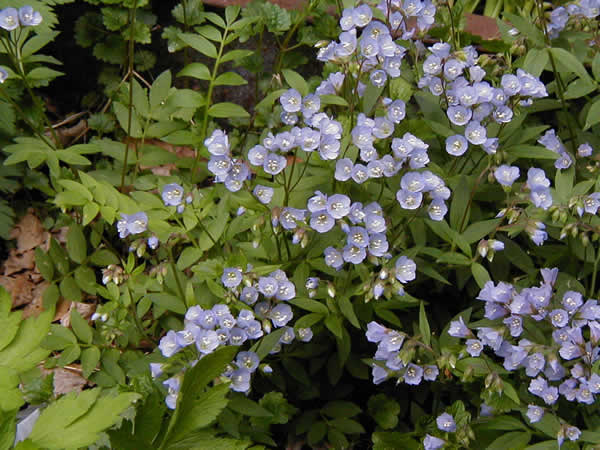
The purple perennial Greek Valerian, often called “Jacob’s Ladder,” has unusual, delicate petals that cluster into striking bouquets. Its scientific moniker, “Polemonium,” alludes to Pontus King Polemon. Jacob’s Ladder was given because of the plant’s leaves, which are reminiscent of ladders, and the biblical Ladder that Jacob saw. This herbaceous perennial blooms briefly in the spring. You can get deep blue or purple variations, with a vivid yellow dot in each centre.
14. Garden Phlox
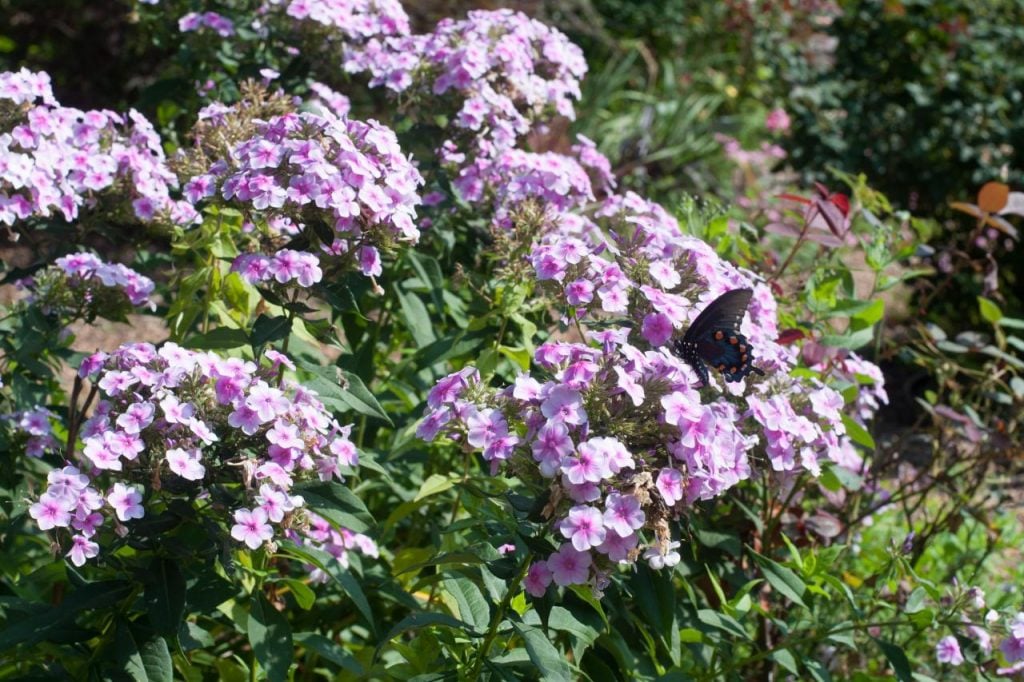
The Polemoniaceae family includes the tall plant species known as garden phlox.Bees, butterflies, and hummingbirds are drawn to the cluster of vibrant blooms on this plant because of its moderate aroma and colour. Since they require little maintenance, these perennial light- or dark-purple flowers are well-liked. Garden phlox plants are the most attractive item around. These striking, tall perennials are perfect for sunny borders. The substantial clusters of pink, purple, lavender, or white blooms bloom for a few weeks in the summer and are superb-cut flowers. Garden phlox is easy to grow and maintain in general.
15. Hardy Geranium
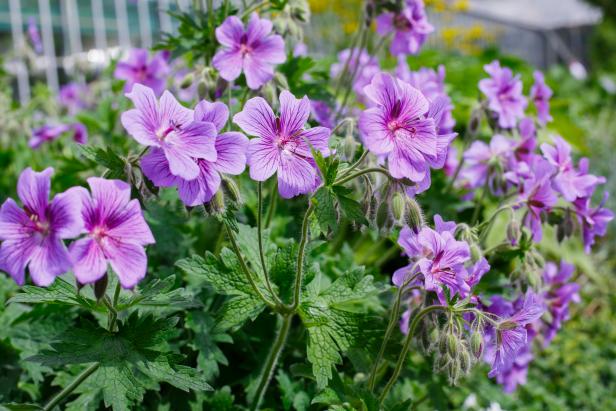
Geraniums, which are indeed a hybrid and are frequently referred to as “zonal geraniums,” differ significantly from Hardy Geranium in many ways. The colours range from blue to pink to white to purple perennials. Resilient Geranium flowers are delicate and cup-shaped, drawing bees and butterflies. When planting Hardy Geranium flowers, ensure the plant’s crown is barely visible or buried beneath the soil. Deep planting might postpone or even stop blossoming. Do not overwater these drought-tolerant plants.
16. Lavender
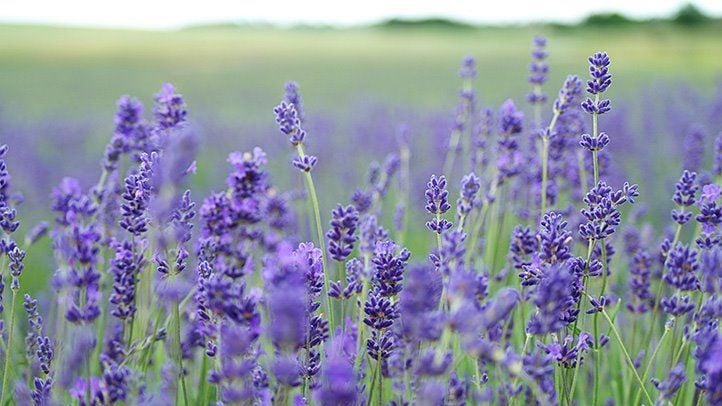
Lavender is renowned for its potent scent and delicate yet vivid purple perennials.Flower spikes protrude through its light-green foliage as it climbs upward. Lavender is an excellent choice to plant near veggies to deter deer because of how it smells. A better night’s sleep and relaxation are advantages of using lavender teas and essential oils. Lavender’s edible flowers and leaves are frequently used to prepare beverages. Despite being reasonably harsh, lavender has a flavour that many people like.
17. Lenten Rose
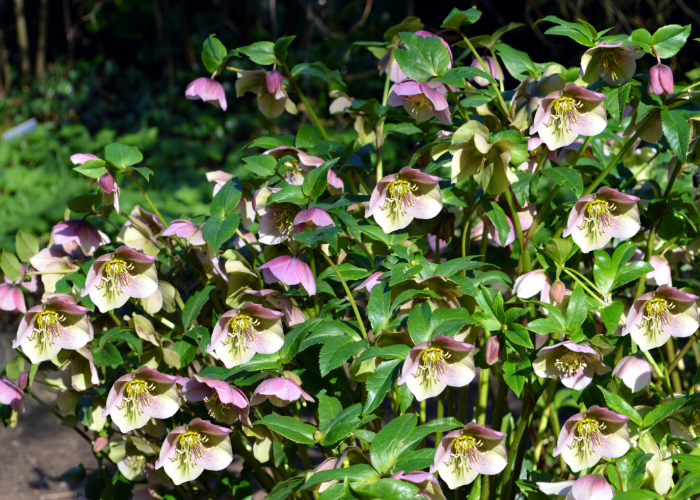
Lenten Rose, despite its name, is a member of the Buttercup family and is not a rose at all. The Lenten Rose produces gorgeous flower buds resembling roses and is a reasonably simple purple perennial. Its evergreen foliage and rosy-purple blossoms give it a very feminine aspect. It may blossom outward, upward, or downward depending on the kind. These perennials are a fantastic choice to plant beneath a shaded tree because they do well in the shadow. They can tolerate some winter sun but must be entirely or somewhat shaded in the summer. Lenten Rose will perform best in fertile, moist, and well-drained soil. Try to prevent overwatering because soggy soil might result in disease.
18. May Night Sage
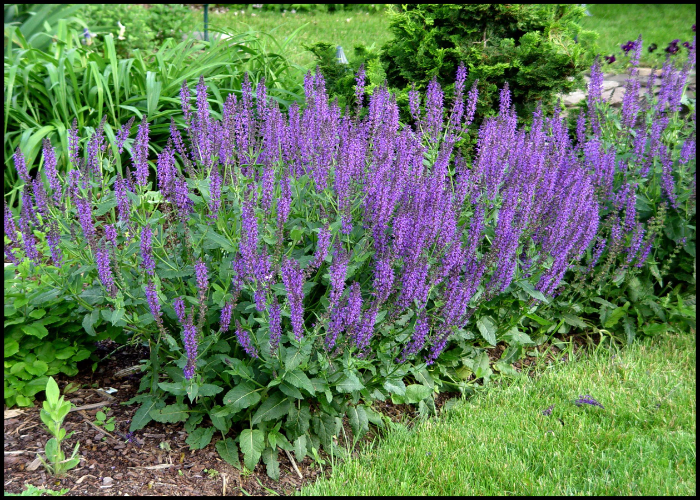
May Night Sage blooms with its deep purple perennials in late spring and summer. Salvia divinorum, one of the several species of May Night, is best famous for its hallucinogenic effects. Salvia Sylvetris develops upward into flower spikes. A sunny area with well-drained soil is ideal for growing blossoms of May Night Sage. As they age, they become more drought-tolerant, but in the first year, they need constant watering. Sand can be used to improve drainage and stop water from collecting.
19. Leading Lady Plum
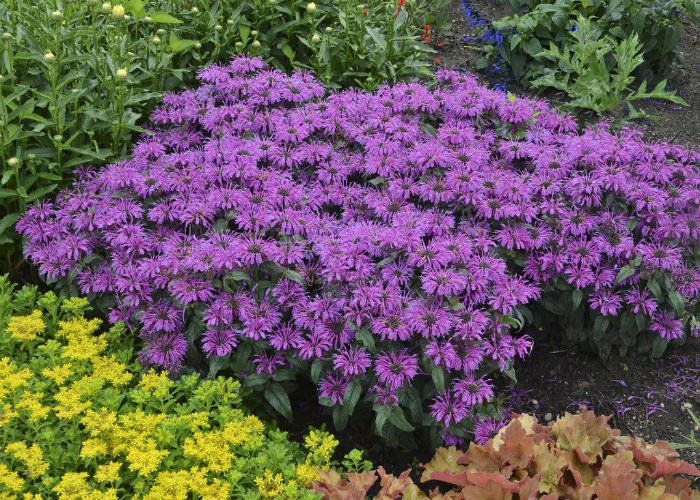
Adding Leading Lady Plum, often called Bee Balm, to your garden will infuse it with a vibrant purple hue. This plant has many branches, and its leaves have a glossy look. Sweet nectar found in every blossom draws hummingbirds and pollinating insects. Leading Lady Plum has the extra benefit of being deer resistant. Lady Plum can endure 4-5 hours in full sun but needs at least 6 hours each day to produce the most awesome blossoms. This attractive purple perennial is versatile with medium water requirements and can grow in clay and sand.
20. Meadow Rue
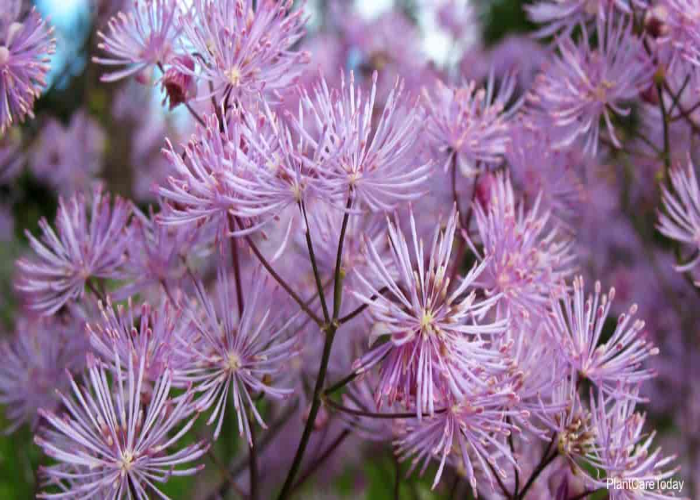
Little, delicate, light purple blooms with soft yellow pistils were grouped on Meadow Rue. Some gardeners could mistake the blossoms of this purple perennial for Columbine flowers since they both have petals that point downward. Its leaves have a variety of hues, from yellowish green to blueish green. Traditionally cultivated in wetlands, Meadow Rue thrives in humus-rich soil. Yet, they may also survive in well-drained soil. The ground has to be maintained moist but not soggy since it might grow mildew if there is too much water around it.
21. Lungwort
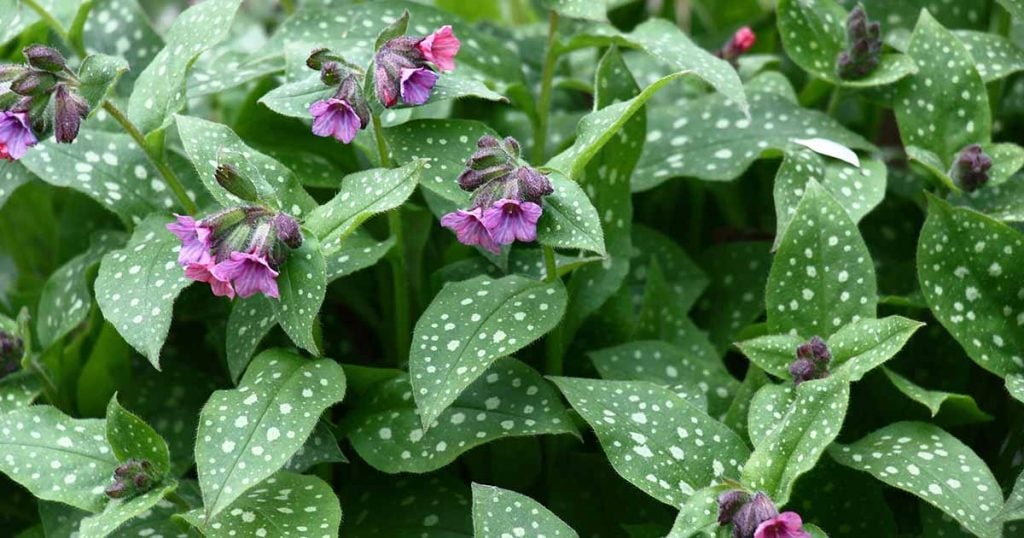
A low-growing plant known as Lungwort was once used to cure lung diseases and receives its name from the shape of its leaves, which resemble lungs. Many gardeners utilize Lungwort in the early spring to spruce up their gardens. Till they mature into violet-blue flowers, young plants have a somewhat pink colour. Avoid direct sunlight when planting purple perennials lungwort, especially in the day’s heat. Nevertheless, too much shadow could result in fading of the hue. Because they prefer mild temperatures, Lungwort may find hot and humid environments too intense. Lungwort does well in rich, well-drained soil and requires just modest watering.
22. Pasque Flower
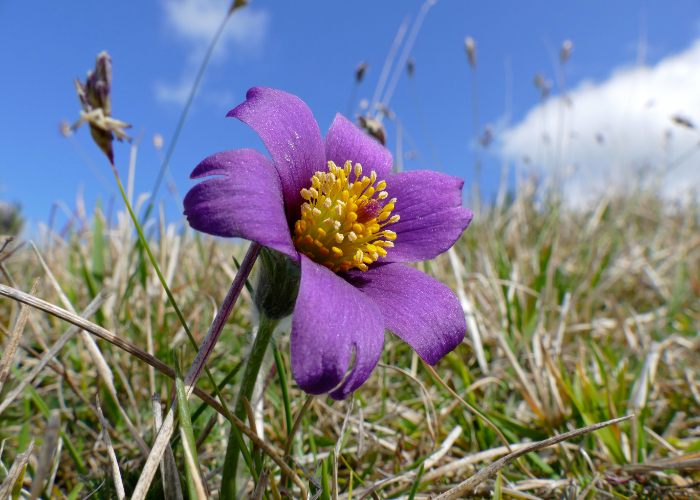
Pasque flowers have vivid hues and can be either blue-purple or red-purple, depending on the type. There are roughly 40 distinct Pulsatilla species, but the violet kind is the most prevalent. Bright yellow fills the vast middle, creating a good level of contrast. This plant is often eye-catching due to the gentle green hue of its leaf. These blooms draw pollinating insects while deterring bunnies. They thrive in dry, chilly environments and can withstand brief droughts once they are established. They will require a lot of water in the heat—the pasque flower blooms in the early spring, occasionally when frost is still on the ground.
23. Mistflower
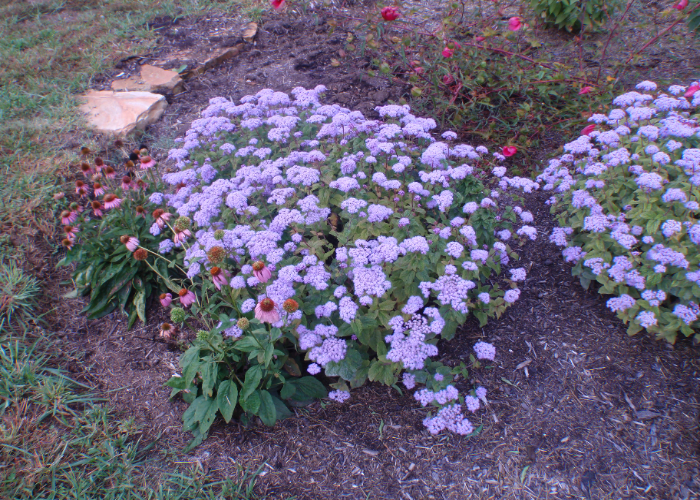
Mistflower, the purple perennials, or Hardy Ageratum, are distinguished by their dense clusters of fuzzy purple flowers. As its name suggests, Mistflower has many long filaments resembling mist. Mistflower and the Floss Flower, which both have an airy look, are frequently mistaken for one another. While growing well in broad light, mistflower love the partial sun, especially in the hot afternoons. These charming tiny blooms may develop in various soil conditions with enough water. Keep the soil evenly wet for optimal results, and until it becomes established, give additional attention during dry spells. This plant often needs watering once or twice a week.
24. Pigsqueak Flower
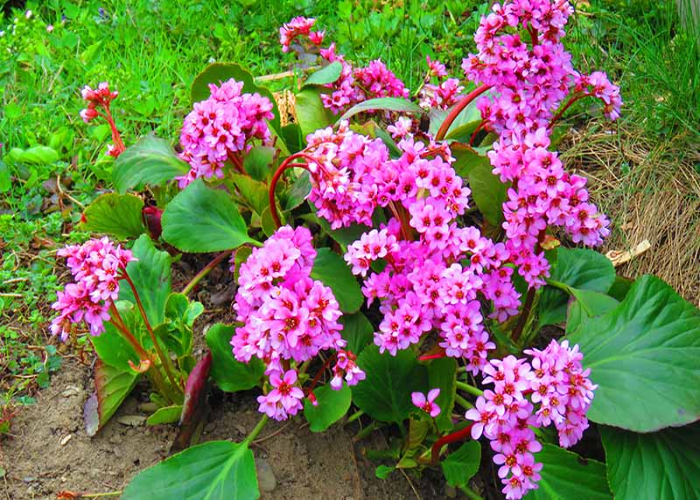
Pigsqueak, Elephant Ears, and Bergenia are also known as this perennial. The plant is called “pigsqueak” from the sound of the rubbing leaves. Because of how much they resemble an elephant’s ear, their leaves are frequently called “elephant ears.” In the summer, Pigsqueak has green leaves that become reddish-brown by the winter. As long as it thrives in well-drained soil, pigsqueak may survive various soil types. They thrive in locations that receive frequent watering and lots of sunshine.
25. Monkshood
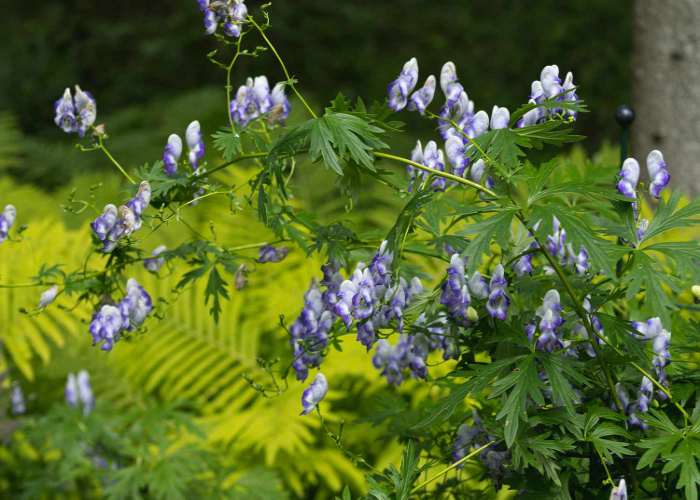
Monkshood flowers are named for the way they mimic the hood of a monk’s robe. This colourful flower has unusual blue-purple sepals that cover its petals. Although aconite grows slowly, spring planting will let you enjoy the summer blossoms. Monkshood might be particular about the soil it grows in. Too much moisture in the soil can make plants appear uncontrolled, and too much water can suffocate the roots. Although monkshood may thrive in a little bit of shade, it loves full sun.
26. Periwinkle
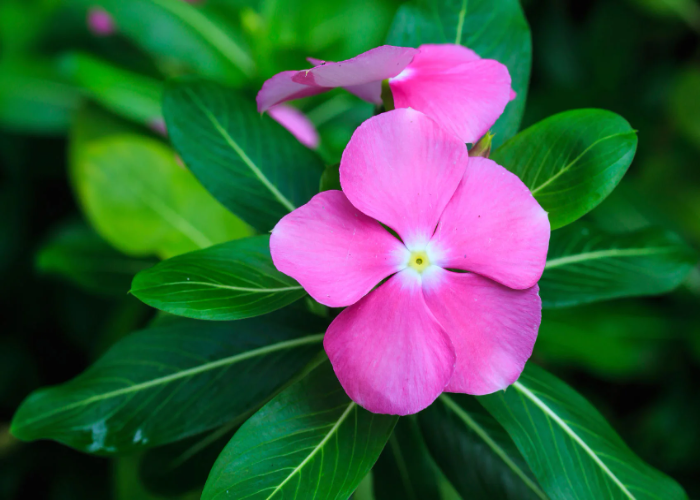
Periwinkle is a low-maintenance, evergreen perennial flower that is very pest-tolerant. It is also known as vinca minor or creeping myrtle. Vinca Minor has tiny purple perennials and blue, white, and lavender blooms. Periwinkle is a favourite among gardeners because it spreads quickly and may occasionally form two-foot mounds. Although the Vinca Minor can thrive in almost any light exposure, it likes some shade. Periwinkle vines should be grown in well-drained soil, but don’t be too particular about the soil type.
27. Princess Flower
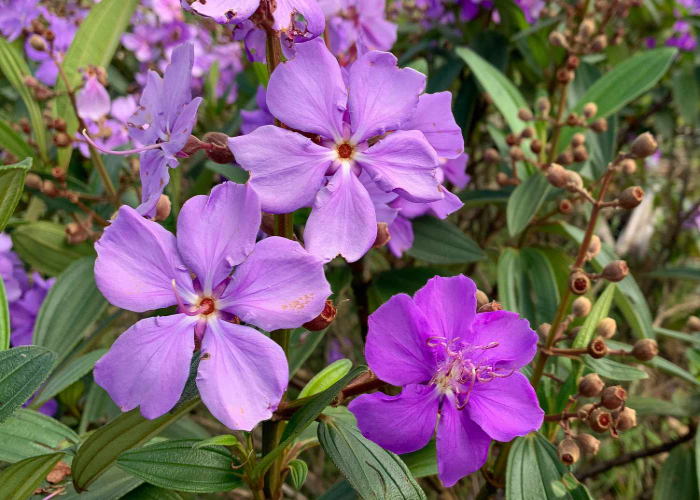
Princess Flowers have magenta-coloured buds and huge, purple blossoms. Princess flowers, the purple perennials, should be planted in fertile, well-drained soil. As they enjoy spending their days in the sun, this perennial can suffer significantly from brutal winters. Bring these flowers indoors if you live in a colder area to protect them from frost. The princess flower plant can be ideal if you want to give your landscape a little pop but don’t want it to seem overly showy. Additionally, it has received the Royal Horticulture Society’s Award for Garden Merit, which is granted solely to plants that are exceptional in quality for use or adornment in gardens. No medical or ayurvedic benefits are associated with the Tibouchina plant; it is utilized as an aesthetic plant.
28. Purple Hyacinth Bean
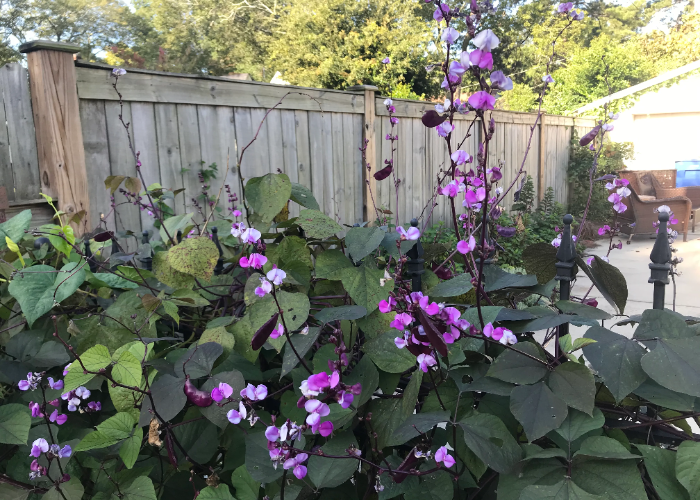
One of the most unusual blooming perennials you may include in your garden is this one. Many gardeners cultivate Purple Hyacinth Bean because of their attractive purple perennials, even though it is almost entirely edible. Nearly every part of the plant, including the stems and leaves, is purple. The whole light is the ideal environment for growing this plant. They are susceptible to infections even though they may thrive in a moderately shaded location. Although enjoying a lot of water consumption, Purple Hyacinth Bean prevents the soil from being too moist. A soil that drains well can prevent water from collecting, leading to root rot.
Purple Perennials for Your Garden
Purple perennial flowers add colour to your yard and look great against the surrounding vegetation. Depending on the tones, their colours make you feel romantic, feminine, or regal. Several purple perennials have distinctive and captivating looks that give your landscape a lot of personality. Every gardener finds the advantages of each bloom to be appealing. The colour is eye-catching and made more vibrant by perennials’ ability to reappear without replanting.
Gardeners; and the general public will enjoy your landscaping’s eye-catching appeal. Although there are other potential flower pigments, the hue is undoubtedly one of the loveliest and most regal. Purple stands for pride, dignity, and wealth. The violet blossoms will be noticeable in your yard, charm your home, or make your bouquet more attractive.
Indeed, purple efflorescence will continue to be the main attraction in your majority of arrangements. These are the purple perennial flowers for you and your garden, regardless of whether you are searching for a showpiece or a fragrance plant.

